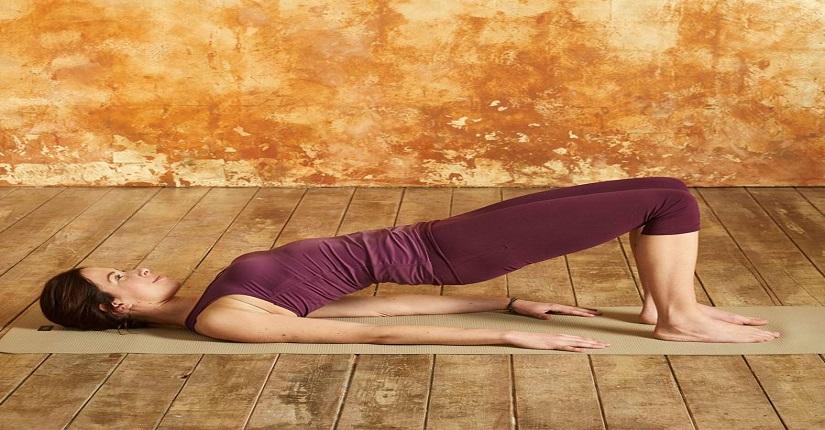
Viniyoga is a style of yoga that focuses on adapting yoga practices to the individual needs and abilities of each student. It is a holistic approach to yoga that emphasizes the therapeutic benefits of yoga postures, breath control, meditation, and other techniques.
Here are some key characteristics and principles of Viniyoga:
Adaptability: Viniyoga instructors tailor the practice to suit the unique needs and conditions of each student. This means that the practice can be modified for people of all ages, fitness levels, and physical conditions.
Breath-Centered: Viniyoga places a strong emphasis on the breath. Breath control, or pranayama, is an integral part of the practice, and students are taught to synchronize their breath with movement. Breath awareness is used to enhance the therapeutic benefits of yoga.
Sequencing: Viniyoga sequences are designed with specific therapeutic goals in mind. The order of postures and movements is carefully planned to address the individual’s physical or emotional needs.
Function Over Form: In Viniyoga, the focus is on the function of the poses rather than achieving perfect alignment or aesthetics. The goal is to improve the overall well-being and functionality of the practitioner.
Meditation and Chanting: Viniyoga may incorporate meditation and chanting (mantra) as tools for self-awareness, relaxation, and mental clarity.
Personal Practice: Students are encouraged to develop a personal practice that suits their needs and goals. This empowers individuals to take ownership of their yoga journey.
How to do Viniyoga
Viniyoga is a highly adaptable and individualized approach to yoga, so the specific practices and sequences can vary widely depending on the needs and abilities of the practitioner. Here are some general guidelines to help you get started with Viniyoga:
Find a Qualified Instructor:
It’s recommended to begin your Viniyoga practice under the guidance of a qualified Viniyoga instructor. They can assess your individual needs and create a practice plan tailored to you.
Breath Awareness:
Start by focusing on your breath. In Viniyoga, breath is fundamental. Learn to breathe deeply and consciously, using the breath as a tool to connect with your body and reduce stress.
Asana (Postures):
Viniyoga uses asanas (yoga poses) that are adapted to your specific needs. Your instructor will guide you through postures that are appropriate for your body, taking into consideration any injuries or limitations.
Movement with Breath:
Coordinate your movement with your breath. Inhale as you move into a posture, and exhale as you release or deepen into it. The breath should guide your movement and help you stay present in each pose.
Sequence Customization:
Your Viniyoga instructor will design sequences of postures based on your goals and requirements. These sequences may evolve over time as your needs change.
Props and Modifications:
Props like yoga blocks, straps, and bolsters are often used in Viniyoga to support your practice and make poses more accessible. Don’t hesitate to use props and ask for modifications as needed.
Mindfulness and Meditation:
Viniyoga often includes mindfulness practices and meditation. These techniques can help reduce stress and improve mental clarity.
Chanting and Mantras:
In some Viniyoga practices, chanting and mantras are used for spiritual or therapeutic purposes. Your instructor may introduce you to these practices if they align with your goals.
Develop a Personal Practice:
With the guidance of your instructor, work on developing a personal practice that you can do independently at home. This practice should address your specific needs and goals.
Regular Practice:
Consistency is key in Viniyoga. Aim to practice regularly, even if it’s just for a short duration. Regular practice can help you experience the therapeutic benefits of Viniyoga more effectively.
Benifits of Viniyoga
Viniyoga offers a wide range of benefits for both physical and mental well-being. Since it is a highly adaptable and individualized style of yoga, the specific benefits can vary from person to person depending on their needs and goals. Here are some of the common benefits associated with Viniyoga:
Adaptability: Viniyoga can be customized to suit the unique needs and abilities of each practitioner, making it accessible to individuals of all ages, fitness levels, and physical conditions.
Improved Flexibility: Regular practice of Viniyoga can increase flexibility by safely stretching and strengthening muscles and joints.
Stress Reduction: The focus on breath awareness and mindfulness in Viniyoga can help reduce stress and anxiety, promoting relaxation and mental clarity.
Pain Management: Viniyoga is often used as a therapeutic tool to manage and alleviate various types of pain, including back pain, joint pain, and muscle tension.
Enhanced Posture: The practice of Viniyoga can improve body awareness and alignment, leading to better posture and reduced risk of postural-related issues.
Strength Building: Viniyoga includes postures and movements that help build muscular strength, particularly in the core, legs, and upper body.
Better Balance: Through a combination of asanas (yoga poses) and breath control, Viniyoga can enhance balance and stability.
Mind-Body Connection: Viniyoga emphasizes the connection between breath and movement, helping practitioners develop a greater awareness of their bodies and minds.
Emotional Well-Being: The practice of Viniyoga may include meditation, chanting, and other techniques that can improve emotional well-being, reduce depression, and increase self-awareness.
Customized Therapeutic Benefits: Viniyoga is often used as a therapeutic tool for managing specific health conditions, such as hypertension, diabetes, and chronic pain. The practice can be adapted to address individual health concerns.
Overall Well-Being: Viniyoga’s holistic approach to yoga can lead to an overall sense of well-being by addressing physical, mental, and emotional aspects of health.
Personal Empowerment: Viniyoga encourages practitioners to take ownership of their practice and develop a personal yoga routine that aligns with their goals and needs, empowering them to maintain their well-being independently.
© Indian Yoga Expert 2026 | All Rights Reserved
© Indian Yoga Expert 2026 | All Rights Reserved